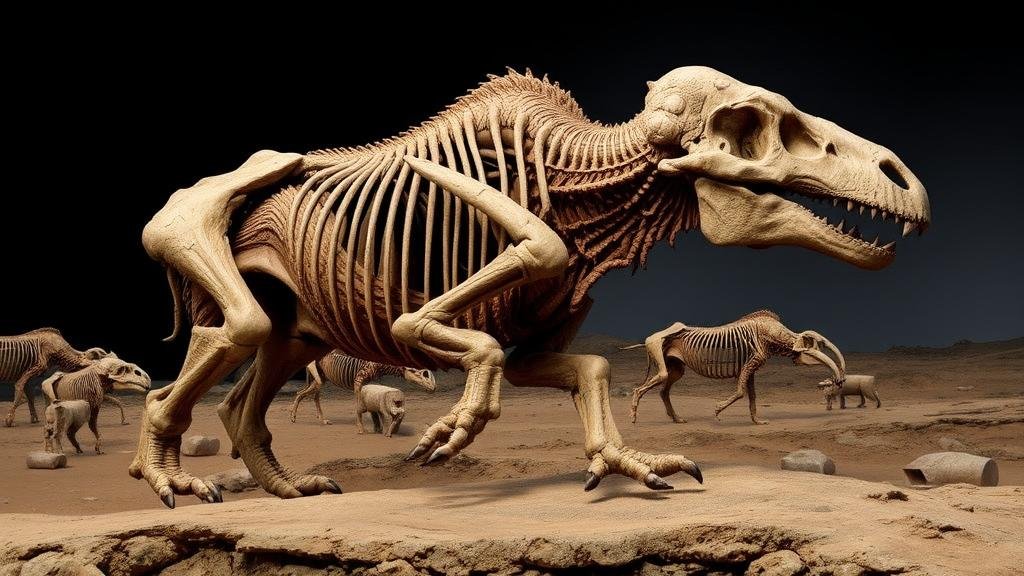Fossilized Giants: Hunting for Prehistoric Mammals in Ice Age Graveyards
Fossilized Giants: Hunting for Prehistoric Mammals in Ice Age Graveyards
The exploration of Ice Age graveyards offers a unique and thrilling experience for rockhounds and mineral collectors. These historical sites, rich in fossilized remains, reveal a fascinating chapter of Earths history, showcasing the incredible giants that roamed our planet thousands of years ago. This article will guide enthusiasts on how to effectively hunt for ancient fossils, understand their significance, and appreciate the geological marvels that lie beneath our feet.
Understanding the Ice Age and Its Mammals
The Ice Age, a period characterized by extensive glacial coverage and significant climatic fluctuations, lasted from roughly 2.6 million years ago to 11,700 years ago. During this epoch, various prehistoric mammals, including mammoths, saber-toothed cats, and giant ground sloths thrived. The remains of these creatures provide invaluable insights into evolutionary biology and climate change. For example, the woolly mammoth (Mammuthus primigenius) stood approximately 13 feet tall and weighed up to 6 tons, showcasing the size and adaptation of these mammals to cold environments.
Identifying Prime Fossil Hunting Locations
Locating fossil-rich sites is crucial for successful fossil hunting. Some noteworthy locations include:
- The La Brea Tar Pits, California: This site is famous for its well-preserved fossils from the Pleistocene epoch, including the remains of thousands of prehistoric animals trapped in tar.
- The Mammoth Site, South Dakota: This active paleontological dig has unearthed numerous mammoth skeletons and offers guided tours and educational programs.
- Rancho La Brea, California: A well-known site among fossil hunters, it contains a plethora of Ice Age animal remains collected in the asphalt deposits.
When selecting a location, consider geological surveys and reports that indicate the presence of sedimentary rock layers, which often contain fossils. Websites like the Paleobiology Database and local geology clubs can be great resources for finding information about fossil-rich zones.
Tools and Techniques for Fossil Hunting
Equipping yourself with the right tools is essential for a productive fossil hunting expedition. Recommended tools include:
- Geology Hammer: Useful for breaking rocks and extracting fossils without causing damage.
- Chisels and Brushes: Fine tools for detailing work; they help carefully excavate and clean fossils.
- Field Notebook: Recording observations and locations is important for research and solace during your journey.
- GPS Device: Helps in pinpointing your location and tracking discoveries over extensive areas.
When hunting for fossils, be sure to work with care and respect the geological integrity of your site. Avoid digging deep into sediment layers unless you have expertise; instead, focus on surface materials where fossils might be exposed.
Preserving Fossils and Collecting Ethically
Once youve successfully found fossils, proper preservation techniques are vital to maintain their integrity. Here are some best practices:
- Gentle Cleaning: Use soft brushes to remove dust and dirt, but avoid using harsh chemicals that can damage the fossil.
- Storage: Keep fossils in a dry, stable environment away from direct sunlight and humidity to prevent degradation.
- Documentation: Keep a detailed record of where and how you found each fossil; this information is invaluable for scientific research.
Also, always ensure that your collecting practices abide by local laws and ethical guidelines. Some fossils are protected by law, and collecting in these areas can lead to severe penalties.
Real-World Applications of Fossil Collection
The study and collection of Ice Age fossils have significant implications for various fields, including:
- Paleontology: Fossils contribute to our understanding of prehistoric life and environmental changes.
- Climate Science: By studying the adaptations of Ice Age mammals, scientists gain insights into how species respond to climate shifts, aiding in conservation efforts today.
- Education: Fossils serve as engaging educational tools that can inspire interest in science, geology, and history.
Actionable Takeaways for Aspiring Fossil Collectors
To wrap up, hunting for prehistoric mammals in Ice Age graveyards can be a fulfilling hobby that combines adventure, science, and education. Here are some actionable takeaways to enhance your experience:
- Research local fossil sites and join geological or paleontological clubs to connect with fellow enthusiasts.
- Invest in quality tools and prioritize safety when excavating fossils.
- Document your findings diligently and ensure ethical collecting by adhering to local laws.
With careful preparation and respect for the natural world, your fossil hunting endeavors can contribute to our understanding of Earths rich history and inspire future generations of collectors and scientists alike.



